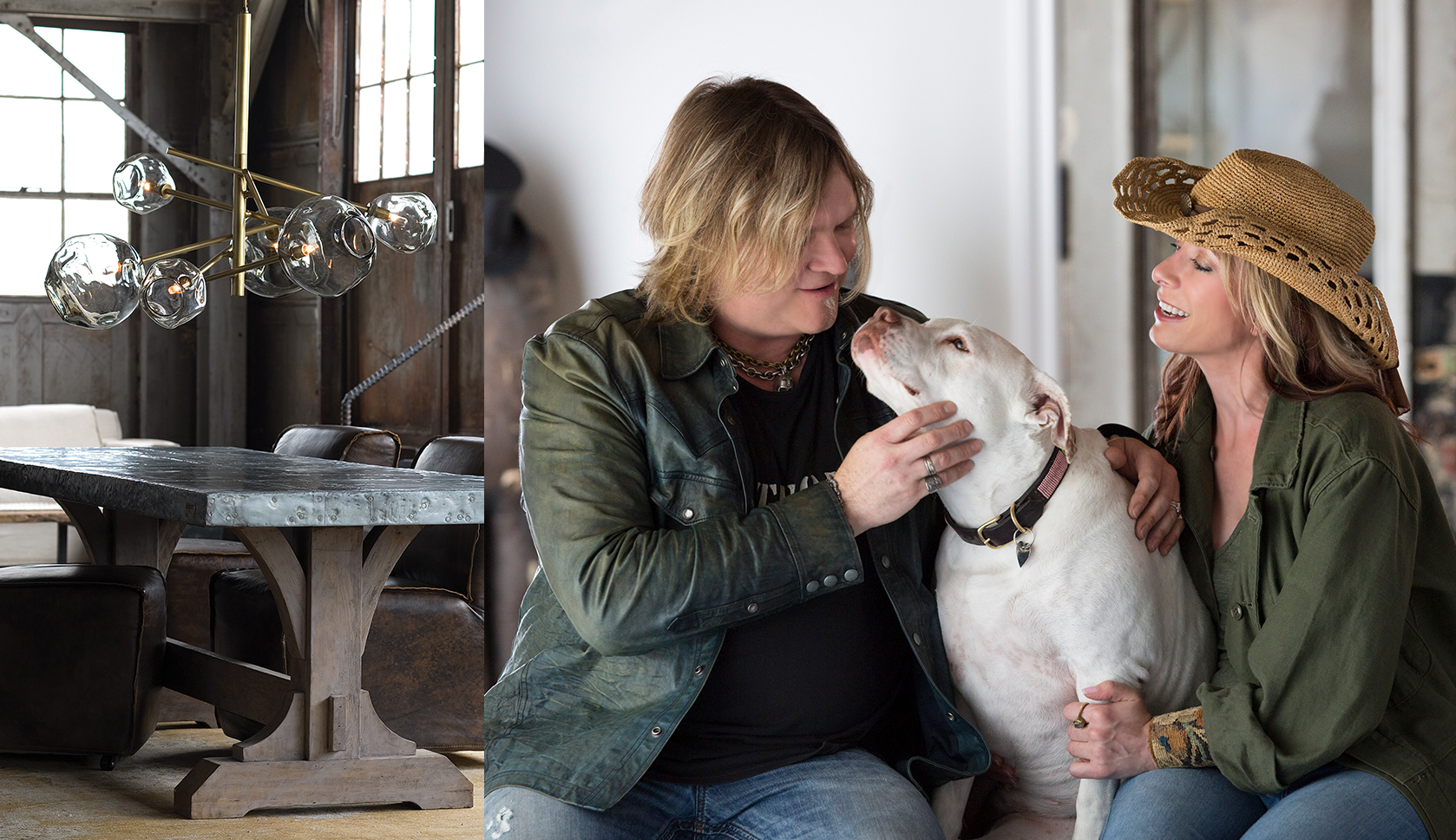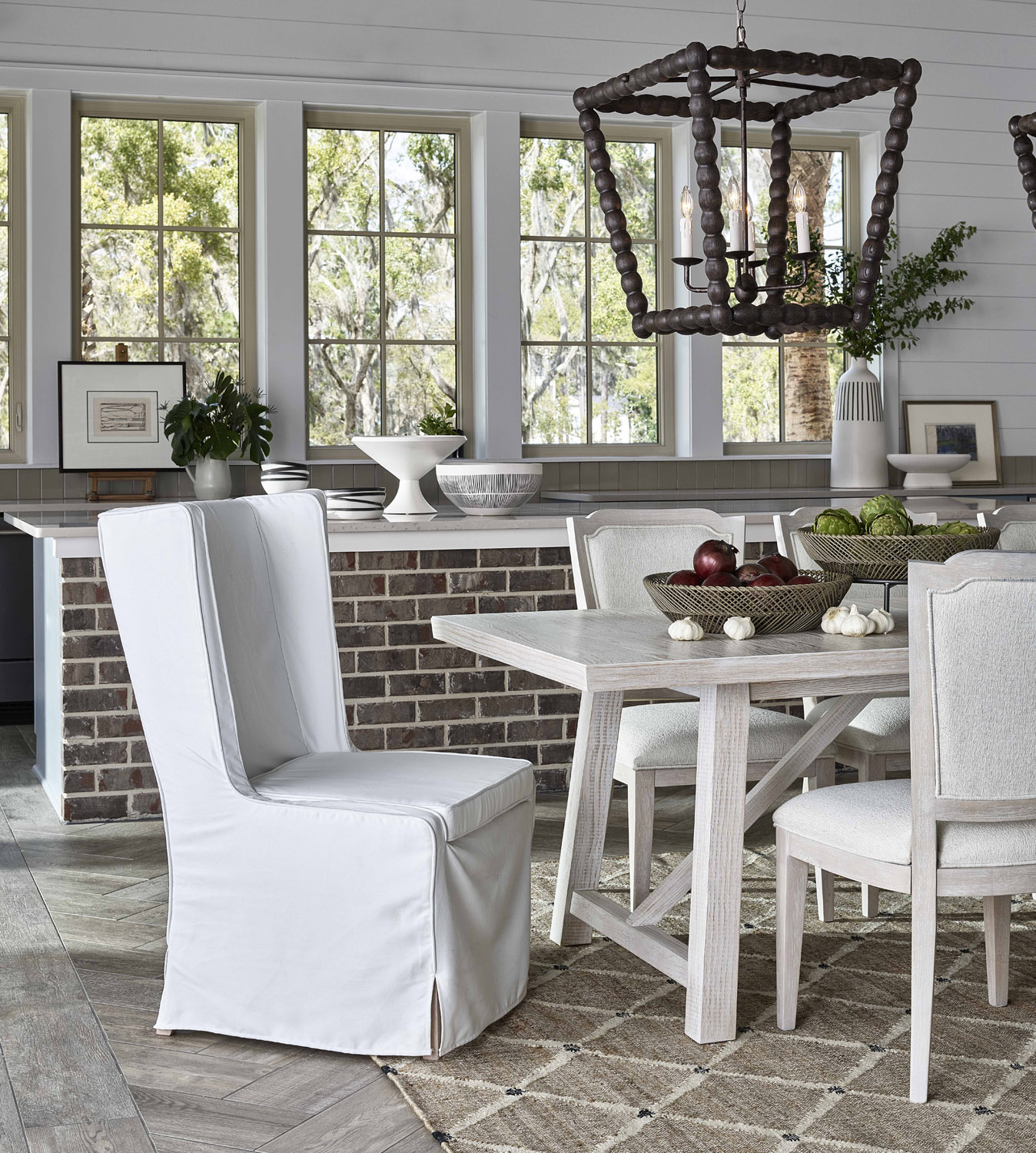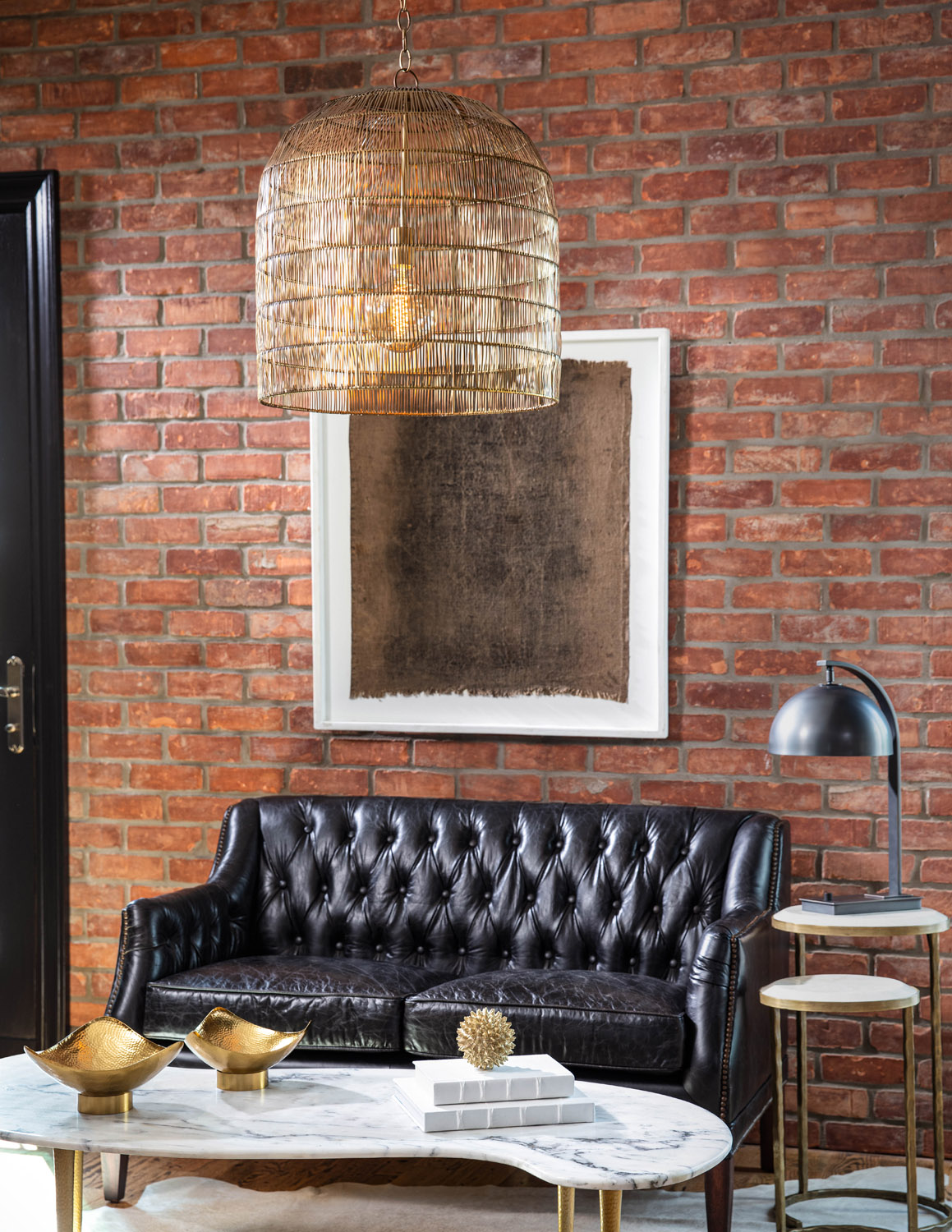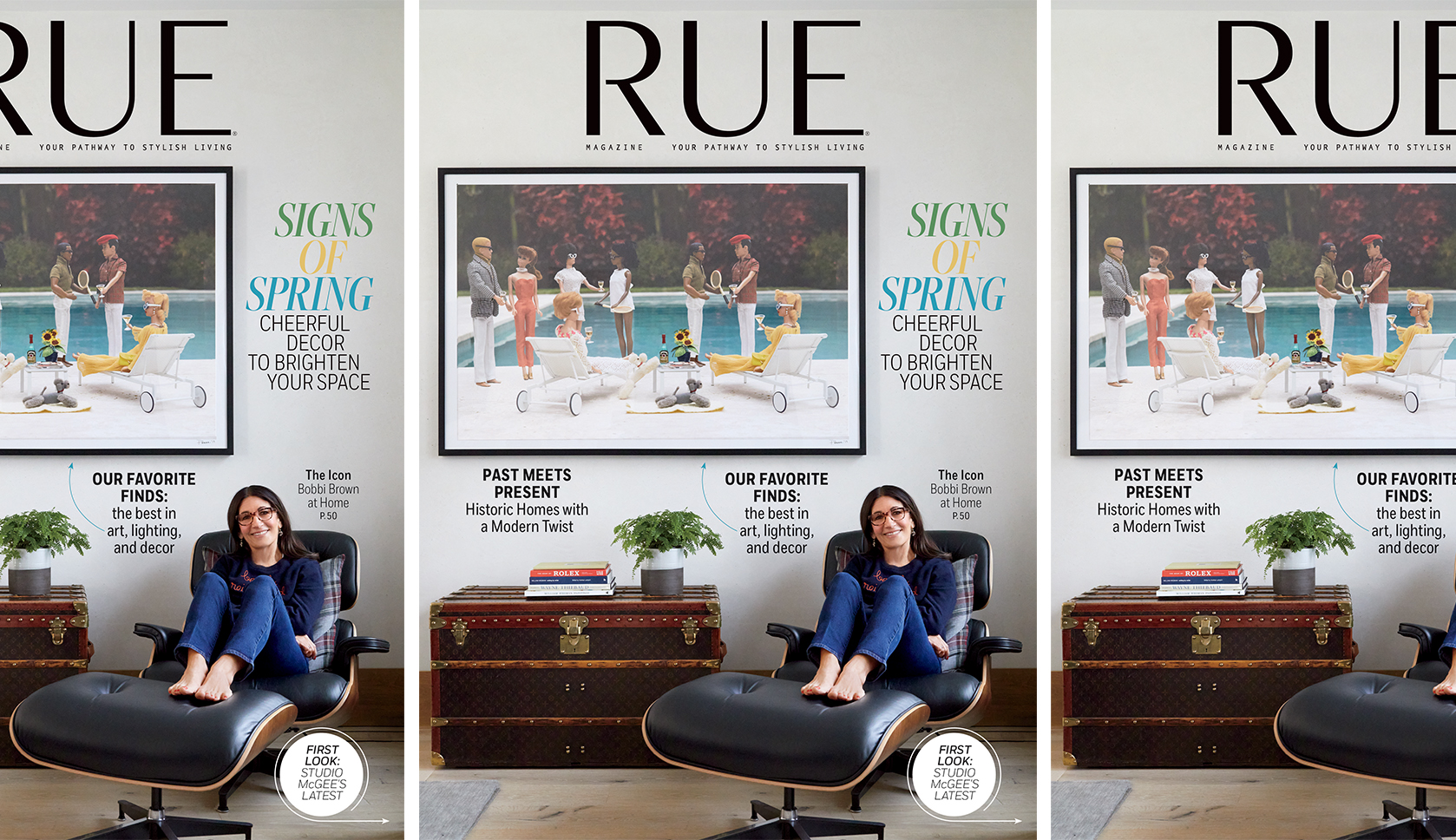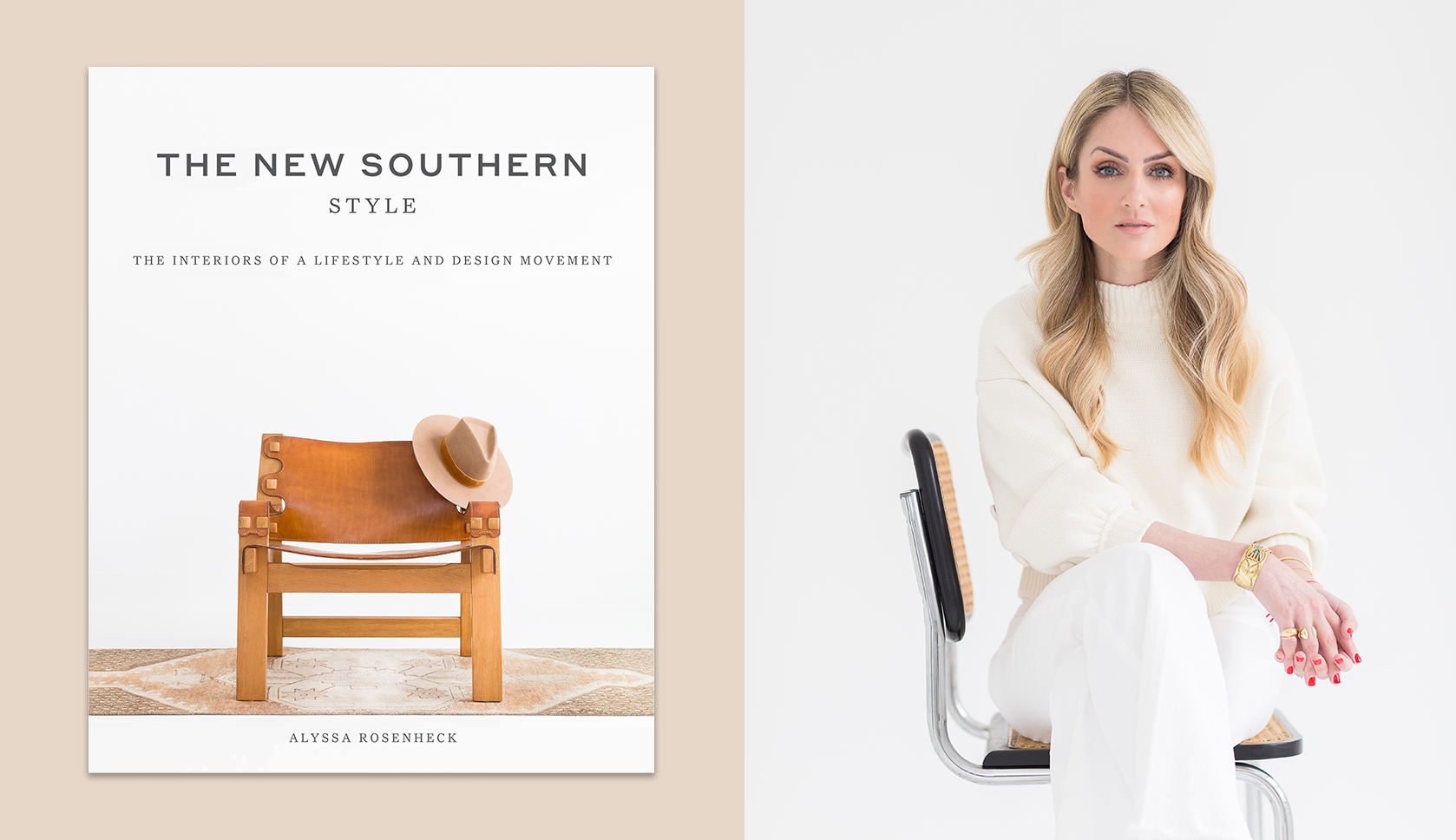For over two decades, Regina Andrew Detroit has been providing the interior design industry with unique, thoughtful, stylish, and versatile pieces. Part of the brand’s signature is that their designs have almost a vintage quality, featuring both a timelessness and patina. Every year, designers, retailers, shoppers, and editors alike flock to their showrooms and site to see what new products are being introduced that season. The brand never misses the mark.
However, great home decor companies aren’t just about the designs, they are also about the people that create them. Behind Regina Andrew Detroit, are founders and real-life couple Carla Regina and James Andrew who have brought the creativity, entrepreneurship, and heart to their brand. We were curious how two creatives that had no background in design, came to create one of the most prominent home décor companies in the US.
Tell us about what you both did before starting Regina Andrew Detroit?
Carla: My background is in fine arts, but in general my creativity and experience have been very hands-on. I’ve always spent my time painting, crafting, gardening… any opportunity to make something unique and personal, that’s where my passion is. When Jimi and I met we quickly discovered that we had similar artistic interests and many of them revolved around home design. Instead of going out to dinner and a movie, we would repaint a room and organize furniture.
James: My background has always been focused on collaboration and “how to achieve things”. I’ve been involved with music since childhood and was producing music commercially in Detroit and LA. I found that I bring that collaborative mentality from my days in music to Regina Andrew.
Once we met, it didn’t take long until we knew we had a lot in common. We enjoyed being creative and doing things home-related, and that changed the course of both of our lives. We began to intensely focus on home decor, our own home, our own garden, our own products (that we started making for ourselves and other designers in the area, on a very grassroots level).
What was your first memorable experience with design?
Carla: In 2001, while waiting for a train in China we walked into a small souvenir shop selling seashells. I bought a few and took them home with us. From these shells we launched a small collection of coastal inspired lamps. When we introduced the collection, the sales and response were incredible. From there we were devoted to designing lighting.
How did that inspire you to then begin making your own home decor pieces?
Carla: From this collection of coastal lighting we started to get a strong following with designers and retailers from coastal regions of the country. This year we launched a branded lighting collection for Coastal Living Magazine which includes over 70 new lighting designs, all inspired by our travels and the coast. Today we are still known for our modern coastal vibe but have expanded our design esthetic and product offerings to include home accessories, furniture, and jewelry.
What was one of your first or favorite pieces that you created?
James: The first piece we created together was a custom doghouse for a charity in Detroit. The doghouse was auctioned off to support a local artist group and was purchased by a designer who placed it in Vice President Dick Cheney’s home. The house was over the top with a domed roof and hand painted with gold leaf trim.
Your company began in a grassroots manner, and today, you have seven different showrooms around the country. Was there a learning curve in making your own decor?
James: Honestly, we dove into this business with little experience in the industry. Looking back this made the road extremely difficult but at the same time lead to our success. We didn’t know the rules, so we made up our own and worked hard every day to push through the difficulties. So far, it’s played out well but there is still more to come.
Carla: “All you need in life is ignorance and confidence, and then success is a sure thing”. This is one of my favorite quotes from Mark Twain and a valuable lesson. I feel this quote best describes where our mind set was when we first started RAD.
Even if you have a similar vision for the brand, you both must get to a point where you might not agree on a design. How have you resolved that in the past?
Carla: Most of the time we collaborate but there are those times when we are not equally inspired by an idea or concept. If this happens and one of us feels really strongly about the idea the other will usually just step back and it becomes a solo project. Overall, we don’t get too serious, there is room for both of us to experiment a bit.
Tell us about one of your classic RAD pieces.
Carla: The Quatrefoil Alabaster Table Lamp is one of our favorite best-selling designs. It’s the perfect combination of a classic silhouette along with the beauty of the natural stone.
The brand was founded in Detroit. How does the city come into play with RAD’s aesthetic?
James: Detroiters have a grit that defines everything we do. Carla went to Wayne State University, located in an inspiring and historic downtown area, near the Detroit Institute of Arts. In contrast to the “industrial” vision that some may picture when the Auto Industry is mentioned, the design scene here is eclectic, open to new ideas and very forward thinking. Detroit is a city full of opportunity that is up for grabs.
Finally, we love that you are both big advocates of animal shelters and adopting pets. Can you tell us how that began and how you are currently involved in that cause?
Carla: We both love animals and advocate for their rights and care. Since meeting we have rescued and adopted all of our pets. When we married, I had three cats and two dogs and Jimi had three cats and one dog. Together we made up the Brady Bunch – but in pets. Currently, we support a local charity called Last Day Dog Rescue out of the Detroit area. Every year we design a canvas handbag featuring a rescue dog on the front. From the sales of these bags 100% of the proceeds go towards senior dogs and those on the urgent list in shelters throughout Michigan, Ohio, and West Virginia.
